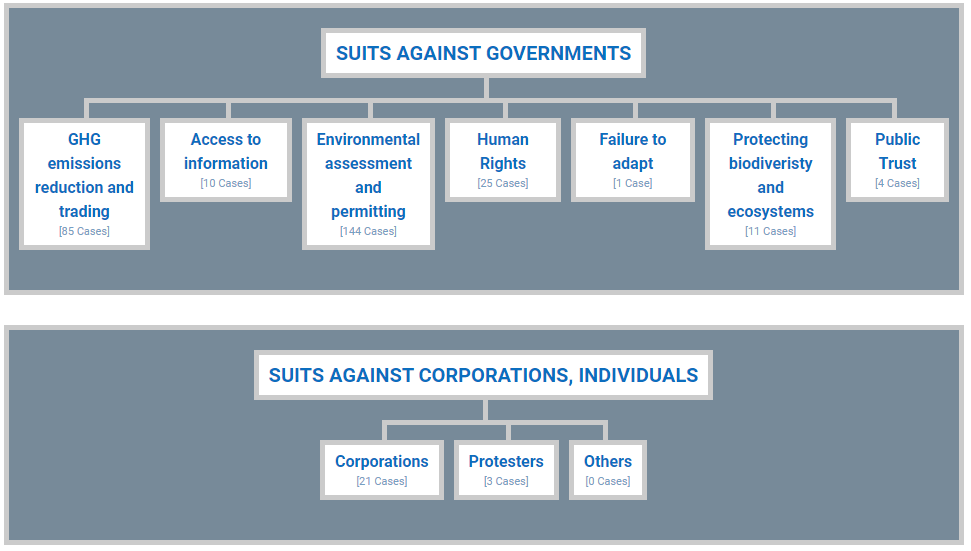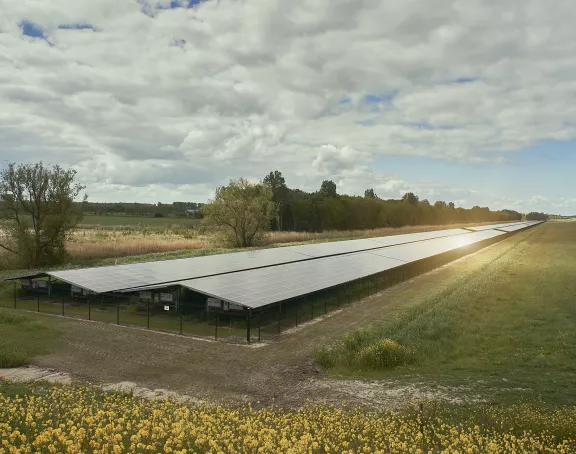Legal trend: climate change litigation
Climate change cases can occur in many shapes and forms. One well-known example is the Urgenda case in which the The Hague Court condemned the Dutch government in 2015 for not taking adequate measures to combat the consequences of climate change. Three years later, the Court of Justice of The Hague upheld this decision, and it is now pending before the Dutch Supreme Court. This case is expected to set a precedent for Belgium, i.a. Since both the Belgian climate case and the Urgenda case are in their final stages of proceedings, this blog provides you with an update on climate change litigation.
Context
Climate change litigation covers a wide range of possible cases, and such litigation is happening worldwide. This blog focuses on the climate change cases such as the Urgenda case and the Belgian climate case in which the national climate change policy is criticized and challenged in court, with the applicants often expressly demanding more ambitious national measures to combat the consequences of climate change. Comparable cases exist in Ireland, Norway, New Zealand, Switzerland, and the United States, among other countries.
Cases are pending against states as well as private actors:

(Overview on Non-U.S. Climate Change Litigation. Source: http://climatecasechart.com/non-us-climate-change-litigation/ ).
Before these cases can result in a conviction, they will meet a few hurdles.
First hurdle: standing before court
At EU level, ten families and an indigenous group brought the so-called People’s Climate Case before the General Court of the European Union in 2018. In short, the applicants argued that the EU’s level of ambition is not sufficiently high in its pursuit of reducing greenhouse gas emissions, and consequently, the lack of measures threatens their human rights. The EU General Court nevertheless ruled on 8 May 2019 that the applicants did not demonstrate that they were uniquely affected by climate change, so they failed to meet the criteria for a substantive hearing. Thereby the Court applied the Plaumann-doctrine1 - to our knowledge for the first time - to climate change litigation. The EU General Court said:
“…it is true that every individual is likely to be affected one way or another by climate change, that issue being recognised by the European Union and the Member States who have, as a result, committed to reducing emissions. However, the fact that the effects of climate change may be different from one person than they are for another does not mean that, for that reason, there exists standing to bring an action against a measure of general application.”
Appeal is currently pending.
On a national level standing before court is, at least in Belgium, accepted more easily. But even before national courts, limits exist. An important limit to climate change litigation is the separation of powers. A judge has limited competence when assessing whether the government is taking sufficient action in a certain domain of its sovereignty. One of the exceptions to this rule is when the conduct of a state entails the violation of human rights. In the Urgenda-case, the Dutch judge used this exception and ruled that the Netherlands “failed to fulfil its duty of care pursuant to Articles 2 and 8 ECHR by not wanting to reduce emissions by at least 25 percent by end-2020.”
Second hurdle: which claims to expect in climate change litigation?
A second question relates to what can be the possible legal consequences of successful climate change litigation. Whilst it is possible, in the aftermath of successful precedents such as the Urgenda case, that climate change litigation entails a decision that demands more ambitious climate change policy, the issue whether a court or tribunal can find a state or enterprise responsible under climate change law is yet to be resolved.
1. Establishing (state) responsibility
International instruments on climate change traditionally do not deal with responsibility or liability after environmental harm, i.e., harm caused due to climate change:
- The 2015 Paris Agreements do not tackle this issue at all.
- The Oslo Principles on Global Climate Change, however, take a more progressive stance. This non-binding instrument, adopted on 1 March 2015 by an international group of legal experts, reads: “while all people, individually and through all the varieties of associations that they form, share the moral duty to avert climate change, the primary legal responsibility rests with States and enterprises.” The latter part of this statement is interesting because the main actors in public international law are states. Enterprises remain in general outside the scope of international law.
2. Causality
The drafters of the Oslo Principles explicitly chose not to deal with the legal issue of awarding damages in light of climate change obligations, given that the “focus is on prevention”. In the same sense, the Court of The Hague found the “causality element” to be irrelevant relevant because the proceedings concerned “a claim for imposing an order and not a claim for damages, so that causality only plays a limited role.” The legal issue of awarding damages in the aftermath of climate change-related harm is nevertheless interesting and merits further discussion.
The 2017 case of a Peruvian farmer suing RWE, a German energy giant, for threatening his Andean home has touched upon exactly this issue. Since 1976, between 30% and 50% of glaciers in the tropical Andes have disappeared. According to the farmer, this entails a grave risk of flooding for the local community. Research conducted by the Carbon Disclosure Project and Climate Accountability Institute, claimed that RWE is allegedly responsible for 0.5% of global greenhouse-gas emissions. Because of this, the farmer argues that RWE should pay for 0.5% of the cost of the flood defences. The case is currently pending. So far, the procedure mainly dealt with procedural issues and the agreement on the appointment of an expert to collect evidence. It is nevertheless clear that it will be extremely difficult to attribute the melting of glaciers in question to the emissions made by one private company. It will thus be challenging to establish a causal link, which is an essential requirement in international and domestic tortious liability law.
Causality also plays a role when invoking human rights in the context of climate change litigation:
- In this case, it must first be established that the state’s actions or omissions have contributed to climate change.
- Secondly, it is necessary that climate change attributed to extreme weather conditions or slow onset of events, which lead to the impairment of a specific human right.2It is clear that substantiating this double causal-link before court will be challenging.
A similar discussion on causality is happening in clear air litigation. A case on the Paris' air quality recently lead to a French judge accepting that the French State committed a fault by taking insufficient measures concerning the quality of air, but did in the end not award damages to the plaintiffs due to insufficient proof of a direct link between their health problems and the state's failure to act.
Conclusion
So far, climate change cases mainly have practical and symbolic consequences rather than legal ones.
While judges have condemned a state for not taking adequate measures to combat the consequences of climate change or even for contributing to climate change, as evidenced by the Urgenda case, the question of what specific consequences this can entail for victims of specific harm or loss remains open. This is evidenced by, for example, the case of the Peruvian farmer suing RWE. This case furthermore indicates that climate change litigation does not necessarily only involve states, but increasingly also affects enterprises such as RWE.
It is currently unlikely, in the light of the causality requirement, that a court or tribunal will award damages for a specific harm or loss. More generally, it will be very difficult to identify the link between the conduct of a certain state to a specific damage, or even a component of the damage. All this implies that an applicant has standing. As evidenced by the decision of the EU General Court this is not a given.


